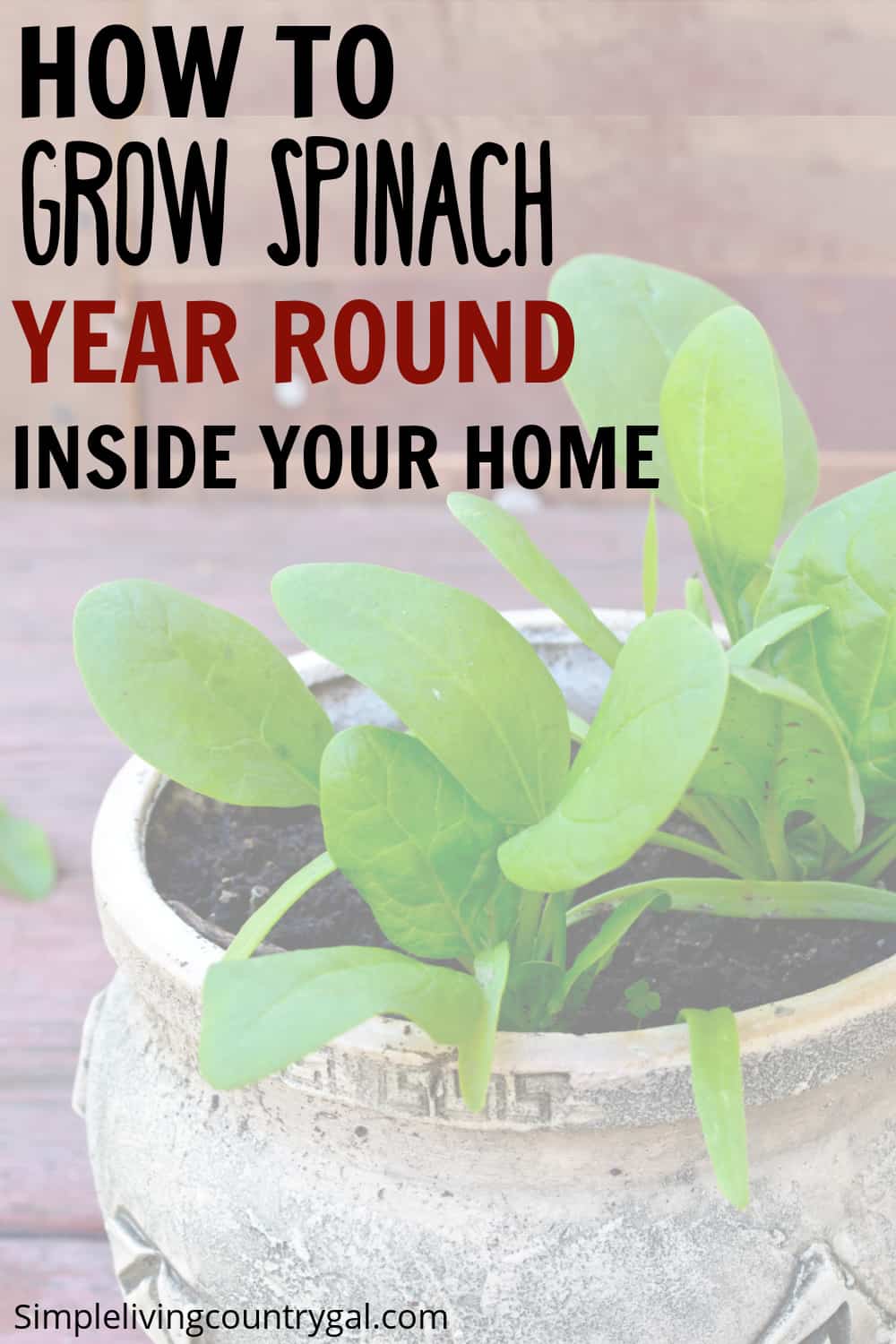How to Grow Spinach Indoors Year-Round: A Comprehensive Guide

Imagine having fresh, crisp spinach at your fingertips all year long. No more soggy supermarket greens or waiting for the perfect growing season. With a bit of know-how and the right conditions, you can transform your indoor space into a thriving spinach garden. Let's dive into the world of indoor gardening and discover how to grow spinach indoors year-round.
Why Grow Spinach Indoors?
Growing spinach indoors offers numerous benefits. Not only do you have a constant supply of fresh greens, but you also avoid the hassles of pests, weather fluctuations, and limited space. Indoor gardening is a rewarding hobby that can enhance your culinary adventures and bring a touch of nature into your home.
Essential Indoor Gardening Tips for Spinach
Choosing the Right Variety
Not all spinach varieties are created equal when it comes to indoor gardening. Opt for compact, fast-growing varieties like 'Space' or 'Bloomsdale.' These types are well-suited for indoor conditions and will reward you with a quick harvest.
Selecting the Perfect Container
When it comes to containers, size matters. Choose a pot that is at least 6 inches deep and wide to give your spinach plants ample room to grow. Ensure the container has good drainage to prevent waterlogging, which can lead to root rot.
Soil and Nutrients
Use a well-draining potting mix enriched with organic matter. Spinach thrives in nutrient-rich soil, so consider adding a balanced fertilizer to boost growth. Regularly check the soil's pH level, aiming for a range between 6.5 and 7.5.
Spinach Growing Conditions: Light, Temperature, and Humidity
Light Requirements
Spinach loves the sun, but it can also thrive in partial shade. Aim for at least 6 hours of light per day. If natural light is scarce, supplement with grow lights. LED grow lights are energy-efficient and provide the full spectrum of light needed for healthy growth.
Temperature and Humidity
Spinach prefers cooler temperatures, ideally between 60°F and 70°F (15°C to 21°C). Avoid extreme heat, as it can cause the plants to bolt (flower prematurely). Maintain a humidity level of around 50% to keep your spinach happy and healthy.
Spinach Care: Watering and Fertilizing
Watering Techniques
Consistent watering is crucial for spinach. Keep the soil evenly moist but avoid waterlogging. A good rule of thumb is to water when the top inch of soil feels dry. Use a watering can with a fine rose to gently water the plants without disturbing the soil.
Fertilizing for Optimal Growth
Feed your spinach plants with a balanced, water-soluble fertilizer every two weeks. Opt for a fertilizer with a higher nitrogen content to promote leafy growth. Alternatively, you can use organic fertilizers like compost tea or fish emulsion.
Hydroponic Spinach: A Modern Approach
Hydroponic gardening is a soil-less method that allows you to grow spinach in water enriched with nutrients. This method offers faster growth and higher yields. Here's a quick guide to get you started:
- Choose a Hydroponic System: Options include the Kratky method, Deep Water Culture (DWC), and Nutrient Film Technique (NFT).
- Select a Growing Medium: Rockwool, coconut coir, or perlite are popular choices.
- Nutrient Solution: Use a hydroponic-specific nutrient solution to provide the necessary minerals for your spinach.

Troubleshooting Common Issues
Pests and Diseases
Indoor spinach is less prone to pests and diseases, but it's not immune. Keep an eye out for aphids, spider mites, and whiteflies. Regularly inspect your plants and treat any infestations promptly with insecticidal soap or neem oil.
Bolting
Bolting occurs when spinach plants prematurely flower, often due to high temperatures or long days. To prevent bolting, maintain cool temperatures and provide consistent light.
Harvesting and Storing Your Spinach
When to Harvest
Spinach is ready to harvest when the leaves are about 3-4 inches long. You can harvest individual leaves or cut the entire plant at the base. For continuous harvests, pick the outer leaves first, allowing the inner leaves to grow.
Storage Tips
Freshly harvested spinach can be stored in the refrigerator for up to a week. Wrap the leaves in a damp paper towel and place them in an airtight container. For longer storage, blanch and freeze the spinach.
Conclusion
Growing spinach indoors year-round is a rewarding endeavor that brings fresh, nutritious greens to your table. With the right growing conditions, proper care, and a bit of patience, you can enjoy a continuous supply of spinach. Whether you opt for traditional soil-based methods or explore hydroponic gardening, the journey of indoor vegetable gardening is both fulfilling and delicious.
So, what are you waiting for? Get your hands dirty and start your indoor spinach garden today!
FAQs
Can I grow spinach indoors without grow lights? While spinach can tolerate partial shade, it still needs a good amount of light. If natural light is limited, grow lights are essential for healthy growth.
How often should I water my indoor spinach plants? Water your spinach plants when the top inch of soil feels dry. Consistent moisture is key, but avoid waterlogging.
What is the best temperature for growing spinach indoors? Spinach prefers cooler temperatures, ideally between 60°F and 70°F (15°C to 21°C). Avoid extreme heat to prevent bolting.
Can I grow spinach hydroponically? Yes, spinach can be grown hydroponically. This method offers faster growth and higher yields. Choose a suitable hydroponic system and nutrient solution for the best results.
How do I prevent spinach from bolting indoors? Maintain cool temperatures and provide consistent light to prevent bolting. Avoid exposing your spinach plants to extreme heat or long days.

0 Response to "How to Grow Spinach Indoors Year-Round: A Comprehensive Guide"
Post a Comment